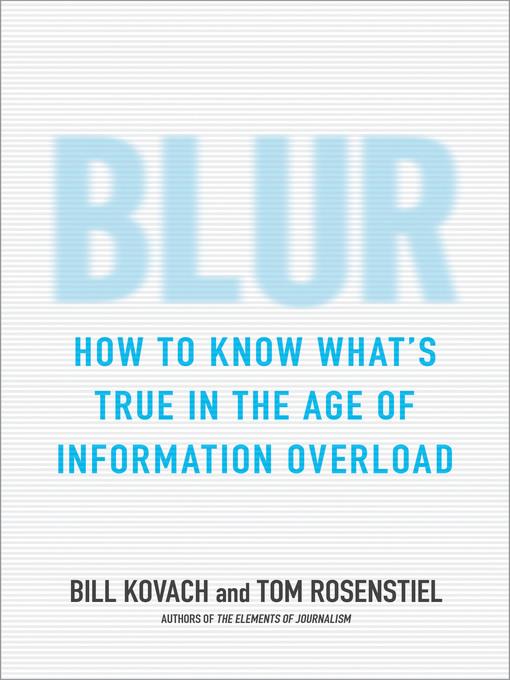
Blur
How to Know What's True in the Age of Information Overload
کتاب های مرتبط
- اطلاعات
- نقد و بررسی
- دیدگاه کاربران
نقد و بررسی

September 27, 2010
Veteran journalists Kovach and Rosenstiel (The Elements of Journalism) begin their intelligent and well-written guidebook by assuring readers this is not unfamiliar territory. The printing press, the telegraph, radio, and television were once just as unsettling and disruptive as today's Internet, blogs, and Twitter posts. But the rules have changed. The gatekeepers of information are disappearing. Everyone must become editors assuming the responsibility for testing evidence and checking sources presented in news stories, deciding what's important to know, and whether the material is reliable and complete. Utilizing a set of systemic questions that the authors label "the way of skeptical knowing," Kovach and Rosenstiel provide a roadmap for maintaining a steady course through our messy media landscape. As the authors entertainingly define and deconstruct the journalism of verification, assertion, affirmation, and interest group news, readers gain the analytical skills necessary for understanding this new terrain. "The real information gap in the 21st century is not who has access to the Internet and who does not. It is the gap between people who have the skills to create knowledge and those who are simply in a process of affirming preconceptions without growing and learning."

October 1, 2010
In an age of 24/7 online news coverage, many traditional standards of journalism, such as who counts as a journalist, objectivity, or a defined news cycle, are irrelevant. Breaking news stories are reported by all types of people before the facts are determined, and consumers are left to decide what is true. Media critics Kovach and Rosenstiel (coauthors, The Elements of Journalism) offer practical advice for analyzing journalistic content in this new media environment. They describe four types of news content: journalism of verification, reporting that values accuracy; journalism of assertion, passing along fast-breaking information with no verification; journalism of affirmation, presenting selective information to an audience with specific political affiliations; and interest-group journalism, offering news-type information but sponsored by a special-interest group. Identifying the type of content is the first step in what the authors describe as a skeptical way of knowing. They offer techniques for examining journalistic content for completeness, sourcing, use of evidence, and relevance. VERDICT This well-written critique of contemporary journalism will appeal to academics, journalism students, and consumers interested in the changes in the news media.--Judy Solberg, Seattle Univ. Lib.
Copyright 2010 Library Journal, LLC Used with permission.

























دیدگاه کاربران